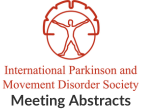Microstructural Changes in Basal Ganglia and Cerebellar Networks in Patients with Idiopathic Blepharospasm
Objective: In this study, we aimed to assess structural connectivity alterations in the basal ganglia, thalamus and cerebellum in patients with idiopathic blepharospasm (BS) compared…A case of severe blepharospasm after psoralen and ultraviolet A treatment
Objective: Report a case of blepharospasm secondary to PUVA therapy Background: Blepharospasm is a focal dystonia that can present as spasms of the eyelids, involuntary…Bilateral Globus Pallidum interna stimulation for Blepharospasm
Objective: Deep brain stimulation (DBS) of the Globus Pallidus Interna (GPi) is performed for treatment of medically intractable dystonia, including primary generalized dystonia, myoclonic dystonia,…The ultrasound image of the nuclei raphes changes in the group of depressed patients with cervical dystonia and blepharospasm
Objective: The ultrasound image of the nuclei raphes changes in the group of depressed patients with cervical dystonia and blepharospasm Background: Nuclei raphe - a…Misdiagnosis in blepharospasm: the common imitators which should not be missed
Objective: Blepharospasm is a focal dystonia whose diagnosis is completely clinical with no blood or imaging biomarker. We observed that sometimes, patients with other disorders…Non-motor symptoms and alteration of brain networks in patients with blepharospasm and hemifacial spasm
Objective: To investigate the differences of non-motor symptoms and the alteration of intrinsic brain networks in patients with blepharospasm and hemifacial spam. Background: Blepharospasm (BSP)…Postural Stability in Blepharospasm and the Effects of Botulinum Toxin Therapy
Objective: To determine (1) how blepharospasm effects postural stability and (2) to evaluate the efficacy of botulinum toxin therapy (BoNT-A) on static balance in patients…Combined effects of rTMS and botulinum toxin therapy in benign essential blepharospasm
Objective: To determine whether repetitive transcranial magnetic stimulation (rTMS) of anterior cingulate cortex (ACC) when added to botulinum toxin (BoNT) therapy improves benign essential blepharospasm…Clinical profile of patients with blepharospasm
Objective: To present the clinical profile of 61 patients with blepharospasm who were treated with onabotulinum toxin injections. Background: Blepharospasm is a focal dystonia that…Abnormal DaTscan in a case of Anoxic brain injury
Objective: To study the utility of DaTscan in anoxic brain injury. Background: Parkinsonism is a clinical syndrome seen in Parkinson Disease (PD) which includes tremors,…
